Mold is a health risk that is both invisible and dangerous. It can be right under our noses. New research shows a disturbing link between mold and several health problems. Getting rid of mold is now a top priority.
One great example is allergic rhinitis, an inflammation of the nose caused by allergens like mold spores. We will talk about allergic rhinitis and practical ways to treat, clean up, and get rid of mold because of the secret dangers of mold exposure and its link to our health.

Imagine having to always deal with sneezing, stuffy nose, itchy eyes, and sinus congestion. For an astounding 10-30% of the US adult population, this is just part of their daily lives. People who live in cities and developed countries are more likely to get allergic rhinitis, also known as hay fever. This annoying condition can happen to anyone at any time.
Being allergic to pollen, dust mites, and, most importantly, mold spores can make your immune system respond. It hurts and makes people inflamed, which lowers their quality of life and makes even the smallest chores feel like a burden.
People don't pay enough attention to the link between mold and allergic rhinitis, even though it can help people avoid and treat the condition, improving the lives of many who deal with it daily.
Mold-induced rhinitis happens when you breathe in mold spores, tiny fungus particles released into the air. Mold likes to stay in damp, dark, and warm places. Basements, bathrooms, and kitchens are common places where mold hides inside. When mold spores are breathed in, the immune system reacts too strongly to these normally harmless particles. It releases histamine and other chemicals that swell the nose and cause other allergic rhinitis symptoms.
People with cystic fibrosis already have trouble breathing, so harmful mold spores can make them more likely to get infections that could cause major breathing problems. Three to ten percent of people around the world are thought to be allergic to mold.
But where you live, the weather and the conditions inside your home can change how much mold you're exposed to and your risk of getting rhinitis from mold. Mold is more likely to grow in places with a lot of humidity. However, mold can be kept in check with good construction and care, which lowers your risk of being exposed.
Mold exposure can cause several symptoms that may appear quickly. On the other hand, mold exposure that lasts for a long time can cause more serious, long-lasting problems.
A strong connection exists between being exposed to mold and having allergic rhinitis. Mold spores can set off the immune system and cause uncomfortable symptoms. Let's look at this case study about how indoor mold and moisture can make you more likely to get rhinitis.
Through a systematic review and meta-analysis of several works, the study looked at the link between dry indoor air, mold, and rhinitis. Given that many people worldwide (5% to 60%) are exposed to water damage and dampness, this study tried to better understand how mold and dampness inside homes can cause and worsen rhinitis symptoms, which could help with prevention and treatment plans.
To get their hands on studies, researchers had to ensure they were original, of a certain type and included a sample of babies, kids, or adults. The studies also had to report dampness, exposure, or both in the home and include an "outcome of rhinitis, hay fever, or rhinoconjunctivitis."
Three reviewers reviewed each study and used a standard data extraction form to write down all the information. The quality of the study was judged on two different scales, and the experts worked out any disagreements as a group.
Using meta-analysis methods commonly used in epidemiologic studies, researchers found chance ratios or incidence ratios. A funnel plot and the trim-and-fill method were used to eliminate any biases.
31 studies that met the conditions were chosen for the review. A lot of research has been done on the link between different types of dampness or mold exposure and allergies. There was a much bigger effect estimate in studies that used home inspections to measure exposure than in studies that used self-reported exposure. Also, it was higher in "continental cool summer and subarctic climatic zones."
The review showed that the risk of rhinitis increases with more water and mold. Mold odor and visible mold are other things that raise the risk of getting rhinitis. Bacteria that can be "smelled" are a big part of getting rhinitis.
Seeing a doctor should be your first step if you have signs of allergic rhinitis. You can take a few steps to fix the problem if they say mold is the cause.
To avoid being exposed to mold spores as much as possible, you should fix any leaks, clean up any mold you can see, and ensure that high-risk areas like bathrooms and kitchens have better airflow. Air purifiers with HEPA screens can also catch mold spores at home and at work.
Some medicines, like antihistamines, decongestants, and corticosteroids, can help handle the symptoms of allergic rhinitis, but they only work temporarily and won't get rid of the mold problem at its source. So, what's your best bet? For a more long-lasting answer, you should hire professional mold removal services.
Stopping mold growth in your home is one of the best ways to keep yourself safe from health problems linked to mold. Mold growth can be stopped by following these helpful tips:
In addition to keeping mold from growing, you should also do the following to lower your overall exposure to mold spores:
We've been getting rid of mold for years. FDP Mold Remediation is the best company to deal with mold problems because we have a team of trained professionals. We offer a complete answer that includes testing, inspection, and IICRC-certified mold removal. We also work hard to make sure mold doesn't come back in the future.
We make sure that your home or workplace is mold-free by putting your health and safety first and giving you great customer service. You can be sure that you've hired the best people in the business to protect your home, health, and well-being because our methods and practices are allowed by the industry.
There are a number of reasons why hiring professionals to get rid of mold is better than doing it yourself. We know how to find mold, get rid of it, and stop it from growing again because we have the right tools, equipment, and knowledge. Our professionals at FDP Mold Remediation of Baltimore follow strict safety rules when they remove mold, which keeps you and your property safe. If you do it half-heartedly, you could be exposed to mold germs, and the problem might not go away, which could put your health at risk.
Mold exposure is a major cause of allergic rhinitis and other health problems, so it's important to stop mold growth and limit your exposure. Our case study showed that mold can hurt anyone, even if they don't live in a place where mold grows easily or in a house where mold grows easily. Don't take chances with your health - call us right away, and our skilled mold removal team will help you make your space safe, healthy, and mold-free.



